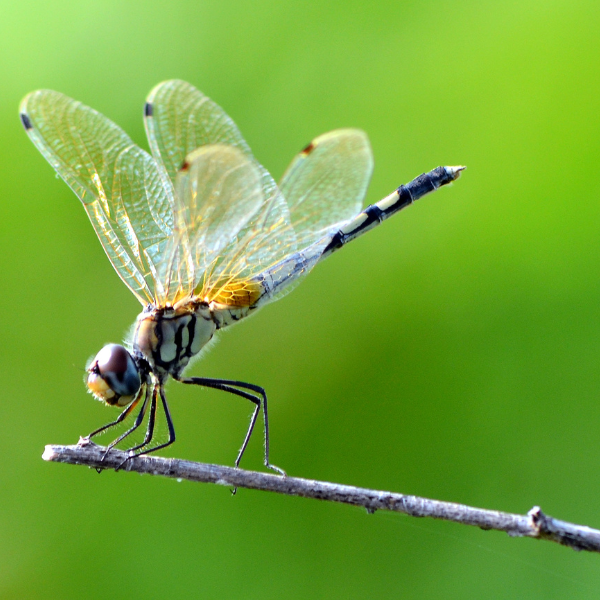
Dragonfly/Damsel Fly – Snáthaid Mhór
Dragonfly nymphs live in the water while they grow and develop into dragonflies taking up to four years to complete always around springtime. The lifespan of the actual dragonfly is about 2-6 months. Damselflies are small typically to 3cm long, bodies 2-4mm in diameter, wings held closed over back when perching.
Dragonflies are larger, bodies long and slim or broad and short, wings held open when perching. Once the nymph is fully grown, and the weather is right, it will complete the metamorphosis into a dragonfly by crawling out of the water up the stem of a plant. The nymph will shed its skin onto the stem of the plant and will then be a young dragonfly. Dragonflies and damselflies belong to an order of insects known by the scientific name of Odonata
The adults (and larvae) are active hunters. Many are strongly territorial; some are migratory and many will actually respond to your presence. There are 32 species on the Irish dragonfly list. Even in the heart of large towns and cities, dragonflies can be seen, and by building garden ponds can be enticed close to our homes. Dragonflies can be seen and appreciated by sitting quietly beside water in sunny weather. It can be worth slowly approaching perched insects for a closer look which is much easier (but less pleasant!) when the weather is dull.
Cooler temperatures on dull cloudy days or in the evening make dragonflies less active and reluctant or unable to fly. The damselflies in particular have the habit of dropping deep into vegetation if disturbed when the air temperature is low. They can then be surprisingly difficult to find. My Nanna told me, when I was a little girl, that the fairies sew the young dragonfly’s wings because of the shimmer and delicate patterns. Have a look for yourself and decide.
